I am still unsure about connecting two DC-DC converters to achieve a higher output voltage. Regarding my question about this DC-DC converter. The answer I selected does not work when no load is connected, and therefore I want to use the answer below but I do not fully understand it.
Would connecting "Common pin" with Vout+/ Vout- via the load resistors not short the connection I want to make and only produce +15 V/-15 V between my ground?
If this schematic is correct, can I still produce the +15 V/-15 V between the midpoint of the circuit?
EDIT: After the comments I changed my schematic.
Am I correct, that the COM+ are now the GND connection for my devices that need +15 V?



